Architecture
From design to construction, we do it all in-house
Suiundo's temple and shrine architecture begins with in-depth discussions with the donor.
The Matsudo workshop, where Suiundo's head office is located, has 4 first-class architects and 3 second-class architects.There are more than 20 palace carpenters and craftsmen working in the workshop.
In the case of major construction companies, design and construction may be separate, or construction may be outsourced, but at Suiundo, the architecture is designed by the own designers and constructed by the own carpenters.
After the design, a template is created based on the design drawings at the Matsudo factory, The work of Suiundo is characterised by the fact that it is carried out by in-house designers and craftsmen.
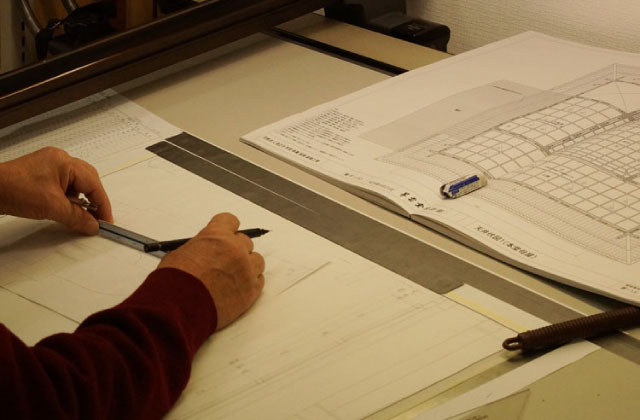

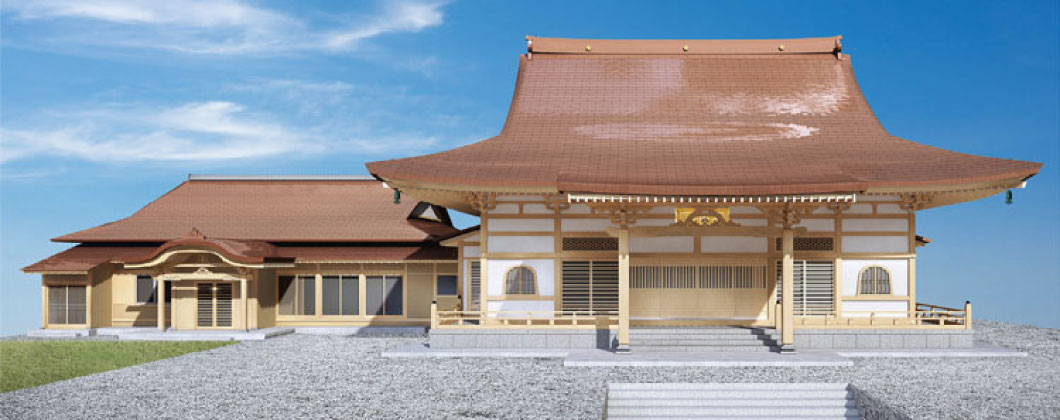
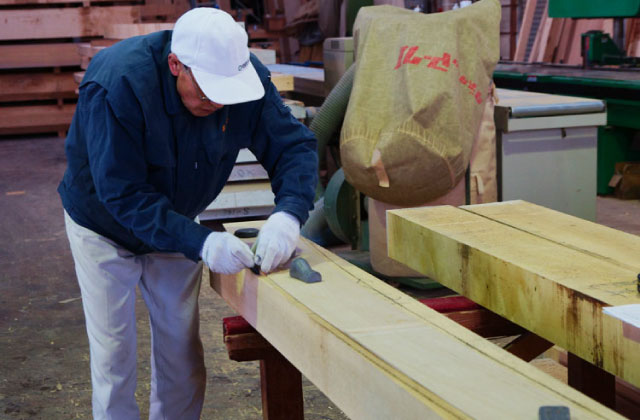
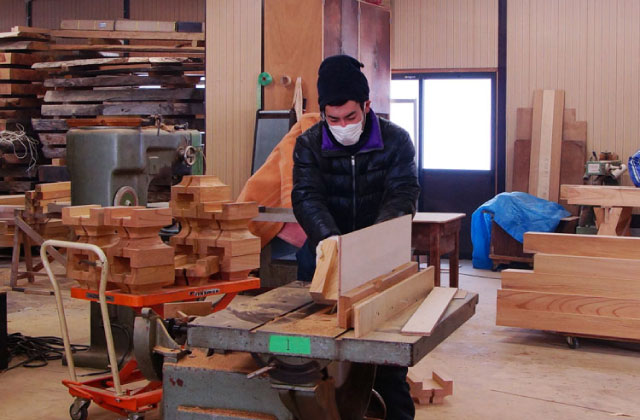
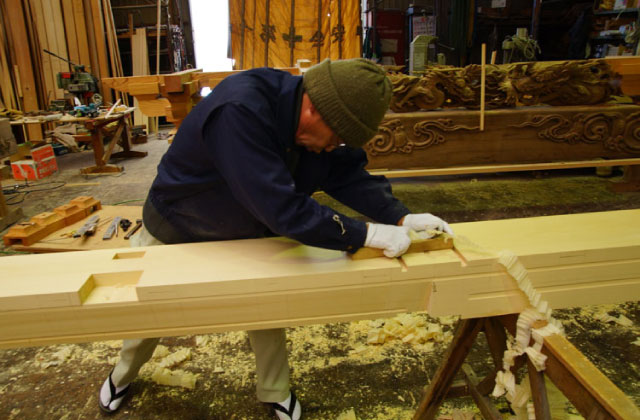

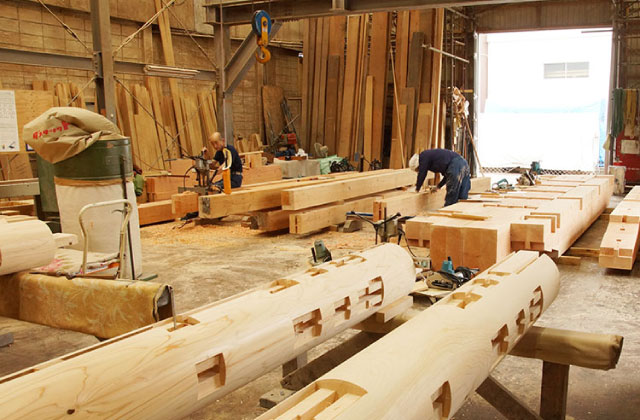
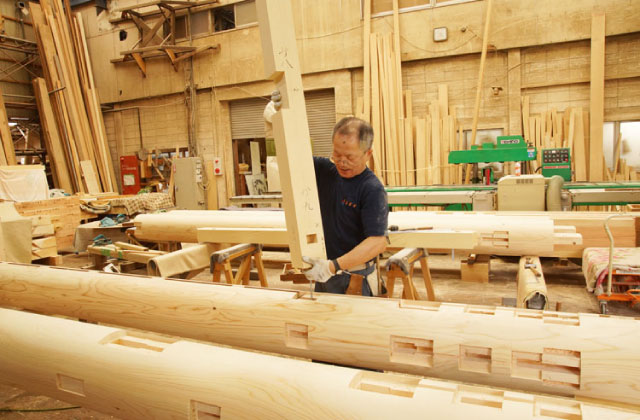
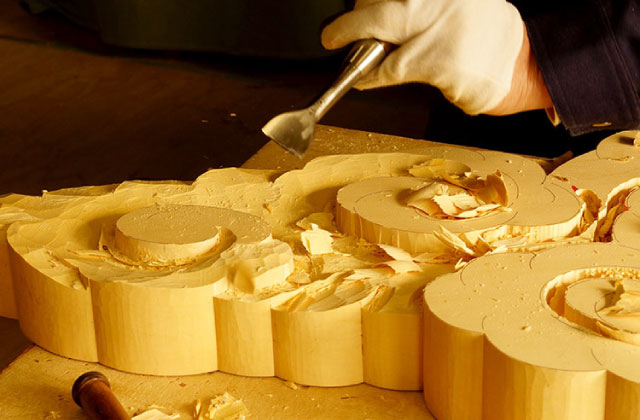
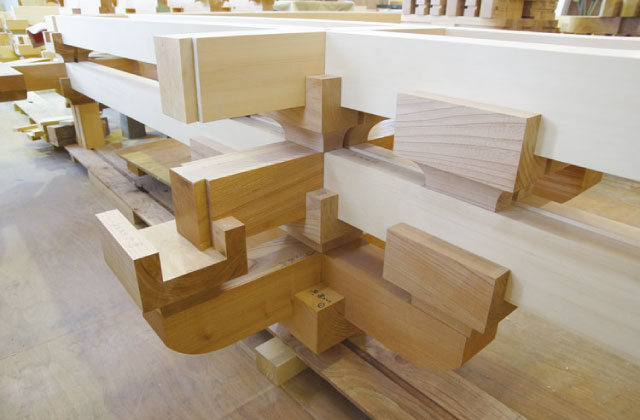
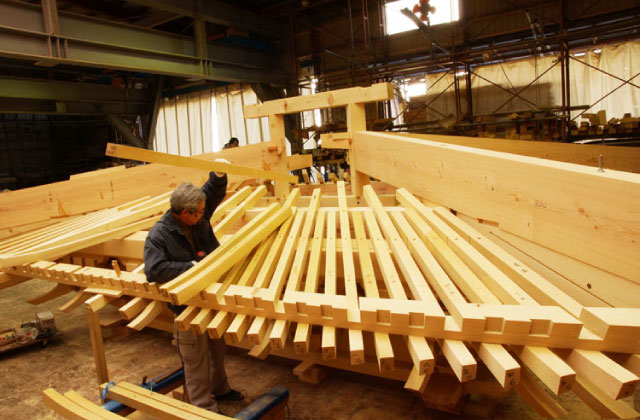
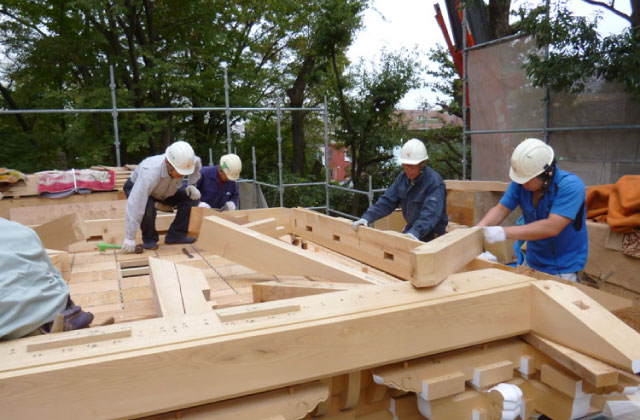
We design architecture and Buddhist ritual implements together.
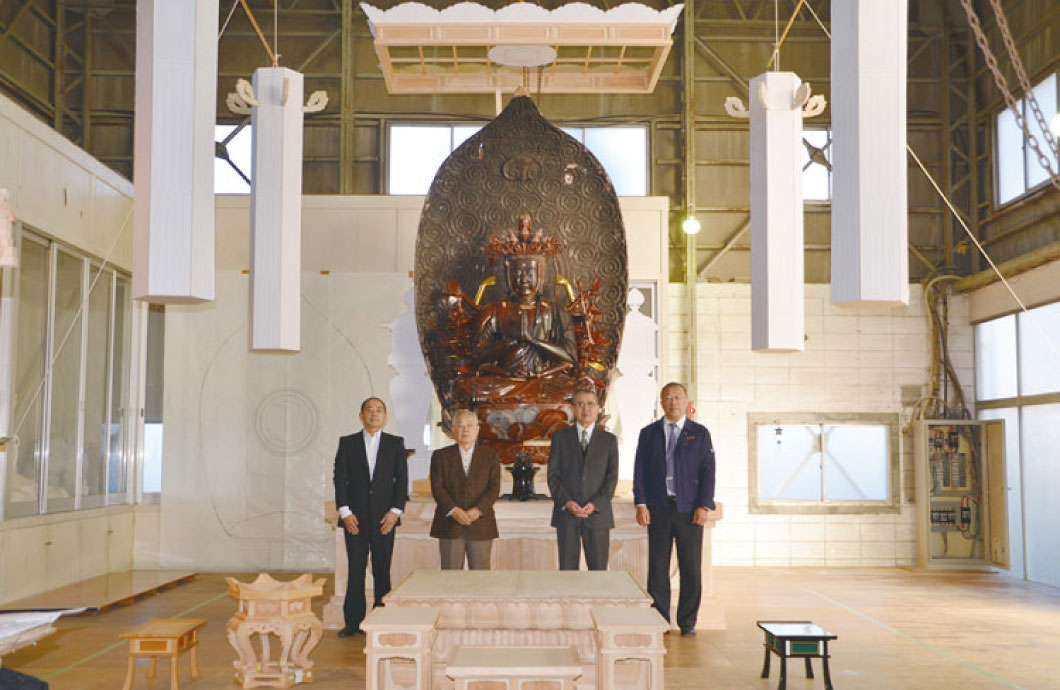
At the Suiundo Matsudo workshop, with its 8-metre-high ceilings,
it is possible to lay out the principal image (Buddha statue) and ritual implements in a way that cannot be realised from drawings alone.
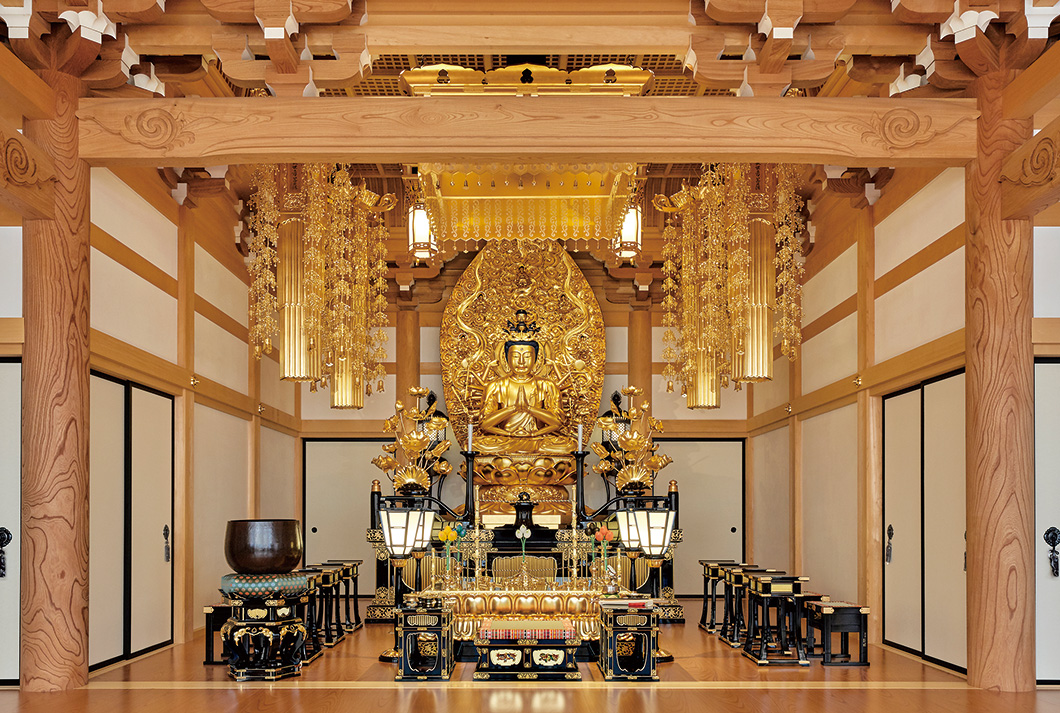
Suiundo can design both architecture and ritual implements.
Normally, based on the design drawings,a Buddhist altar shop will design and arrange the ritual implements on the drawings.
Suiundo proposes designs for ritual implements that match the architecture.
You can also check the actual placement of Buddhist statues and ritual implements.
The workshop has a space with a ceiling height of 8 meters, You can actually see how the canopy, Doban, Daidan, Shumidan, front table, Kūden, and other items are arranged, which is very popular with our customers.
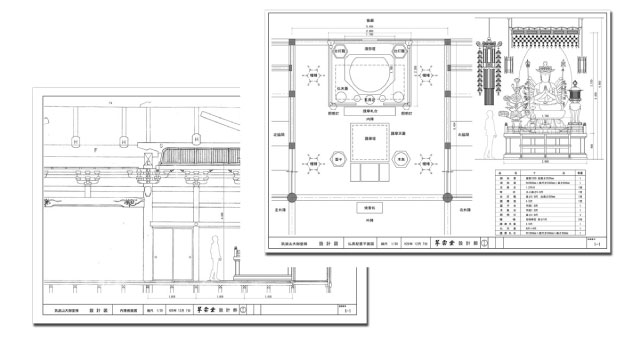
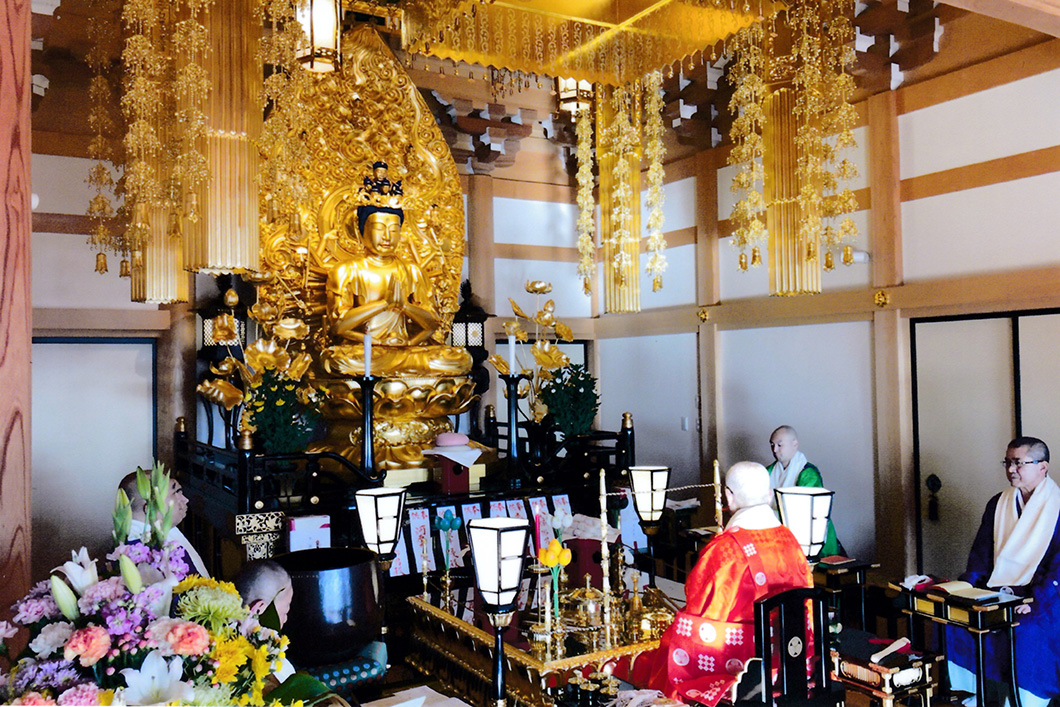
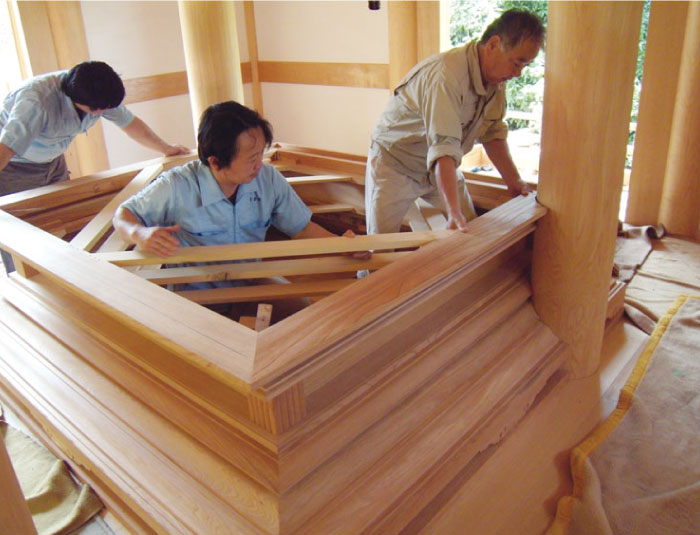
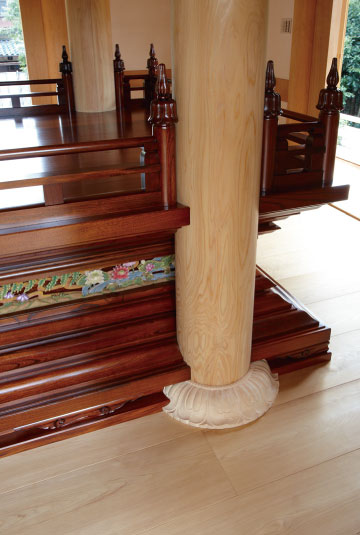
Architectural materials are processed and ritual implements are produced at the Matsudo workshop, ensuring perfect harmony between architecture and ritual implements.

Architectural materials are processed and ritual implements are produced at the Matsudo workshop, ensuring perfect harmony between architecture and ritual implements.

Abundant timber
Suiudo has a large stock of high-quality timber such as Japanese cypress, zelkova and Aomori cypress, which are essential for temple and shrine construction.
Major components such as columns and rainbow beams require large-diameter wood from these famous trees, which is one of the reasons why Suiundo is trusted.
Suiundo has obtained timber bidding qualifications from the Kanto Forest Management Bureau and purchases timber directly from producers through bidding.
We also have a large stock of imported Korean pine and Yellow Cypress, which are rare materials.
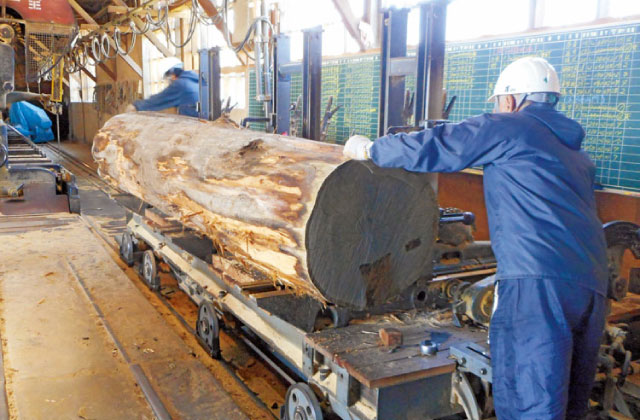
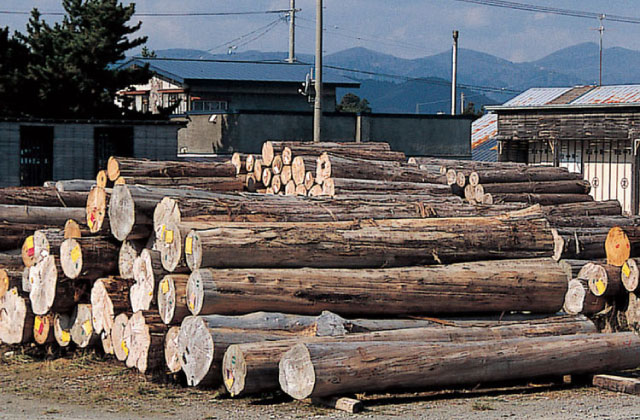
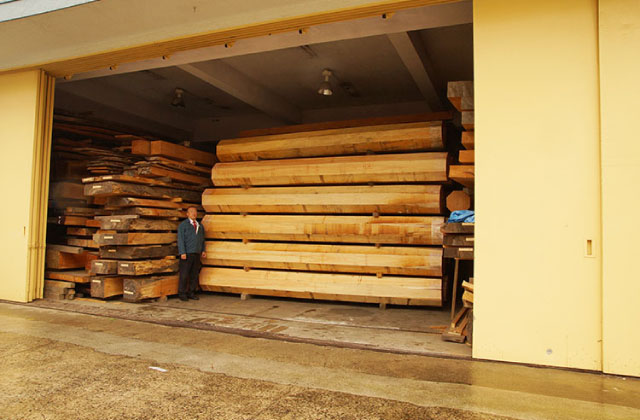
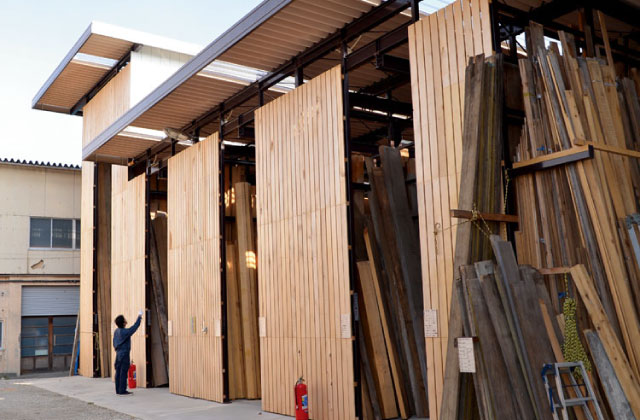
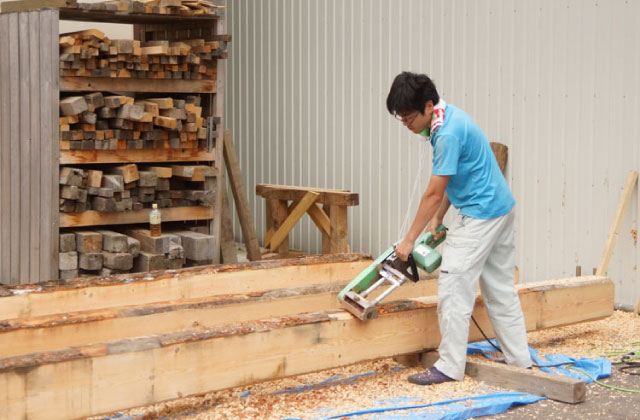
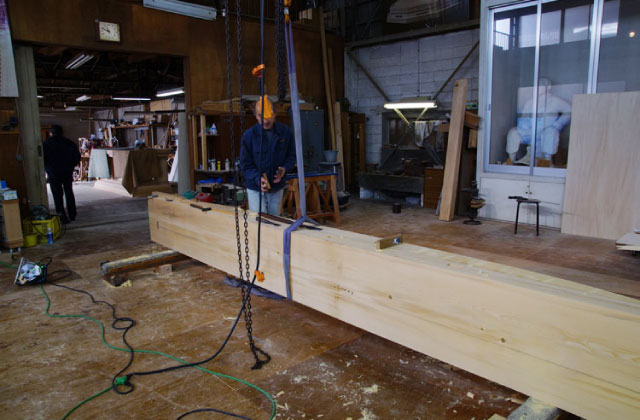
Renewal of temple and shrine architecture
The work that Suiundo is asked to do is the restoration of temple and shrine architecture.
shrines and temples require regular restoration and renovation, and Suiundo performs renovation work as well as roof tile replacement, architectural cleaning, and colouring.
Due to the recent increase in the number of earthquakes, we have received many inquiries about how to improve earthquake resistance.

Enjō-in Temple, Shingon-shū Chizan school (Saitama City, Saitama Pref.), Main Hall renovation work
The roof was re-tiled, and all the rafters were cleaned. The joinery was replaced.The precincts are maintained.
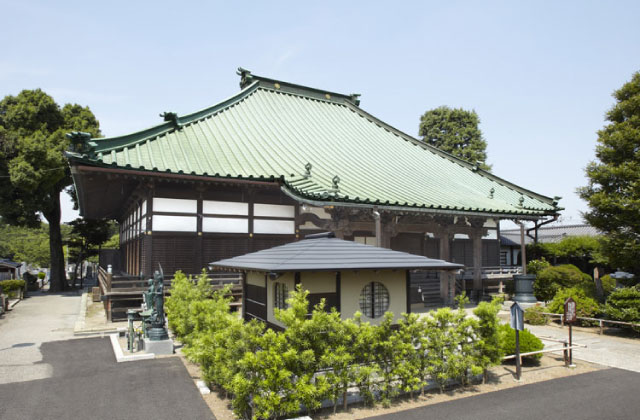
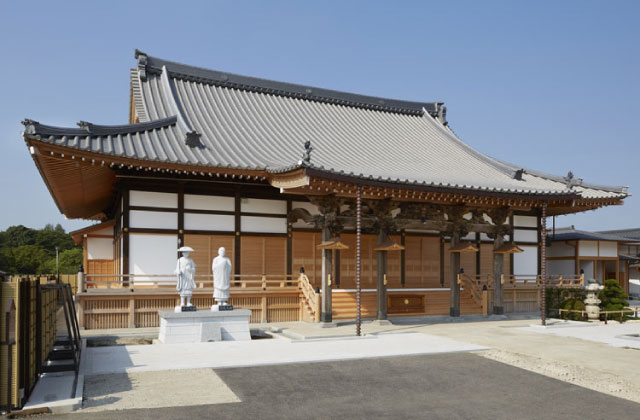
Sōji-ji Temple, Shingon-shū Chizan-school, Main hall renovation work(Nishi-Tokyo City, Tokyo)
Earthquake-proof construction. The roof was re-tiled, and all the rafters were cleaned. The joinery was replaced. The precincts were maintained.
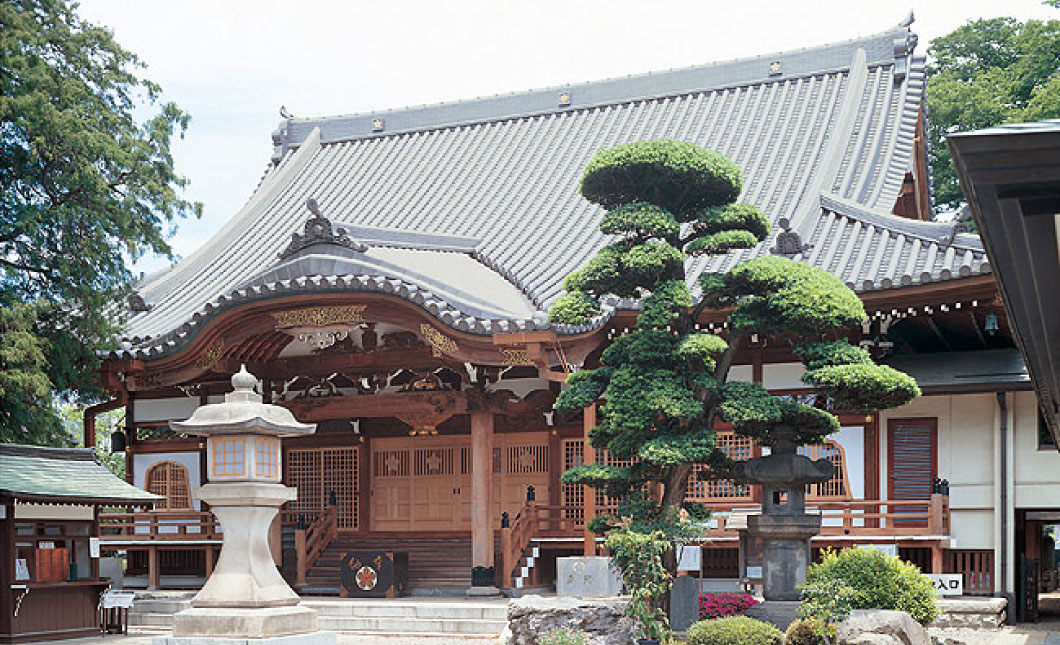
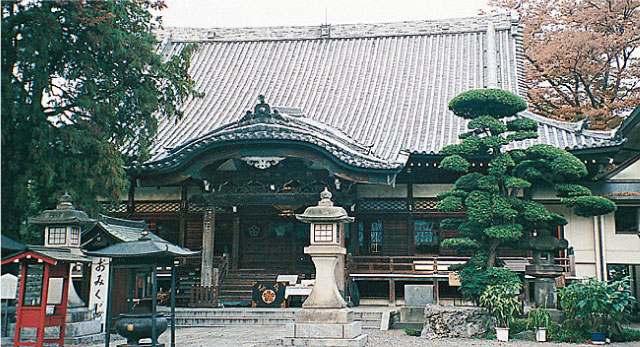

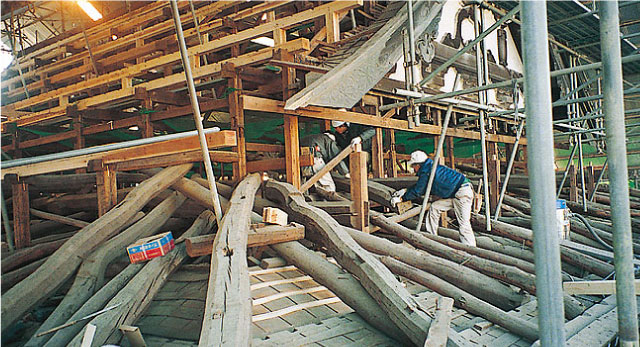

Kannon-do (Kannon Hall) at Kyōtoku-ji Temple, Soto-shū, Hitachi City, Ibaraki Pref.: Exterior restoration, painting, and colouring restoration

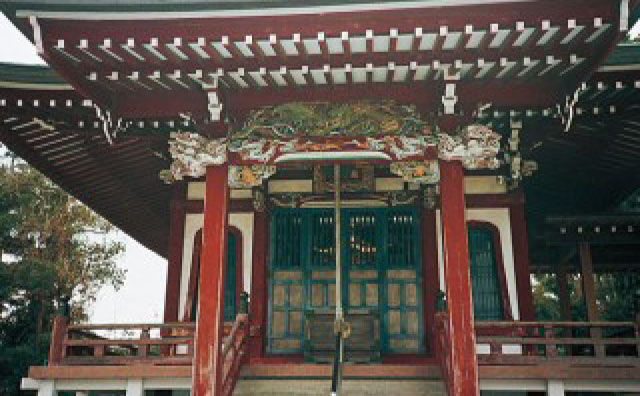

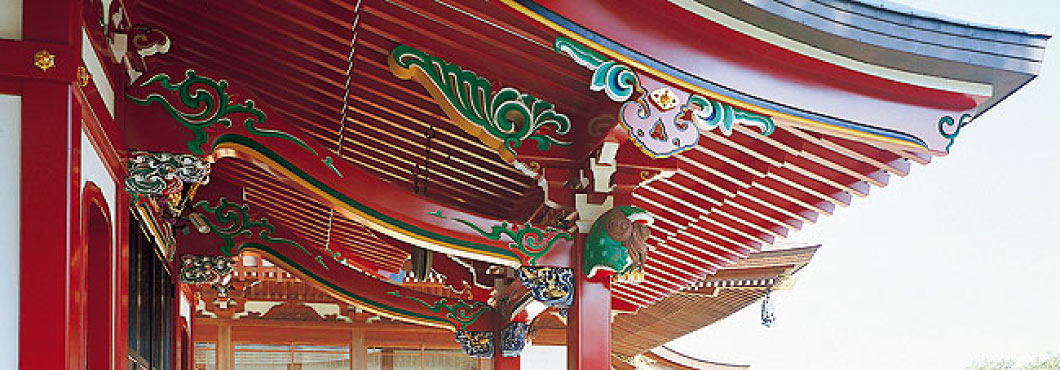
Tozenji Temple, Jodo-shū(Matsudo City, Chiba Pref.): Restoration of the inner sanctuary with richly colored designs
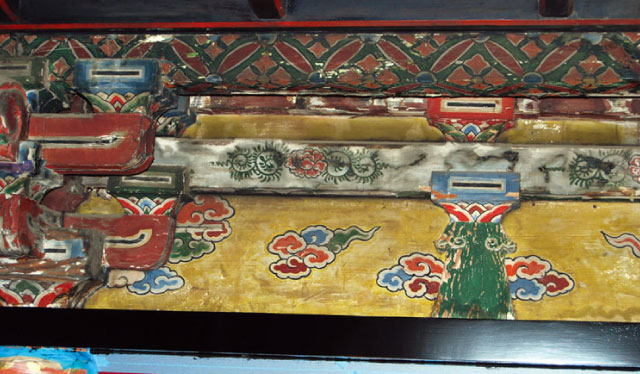

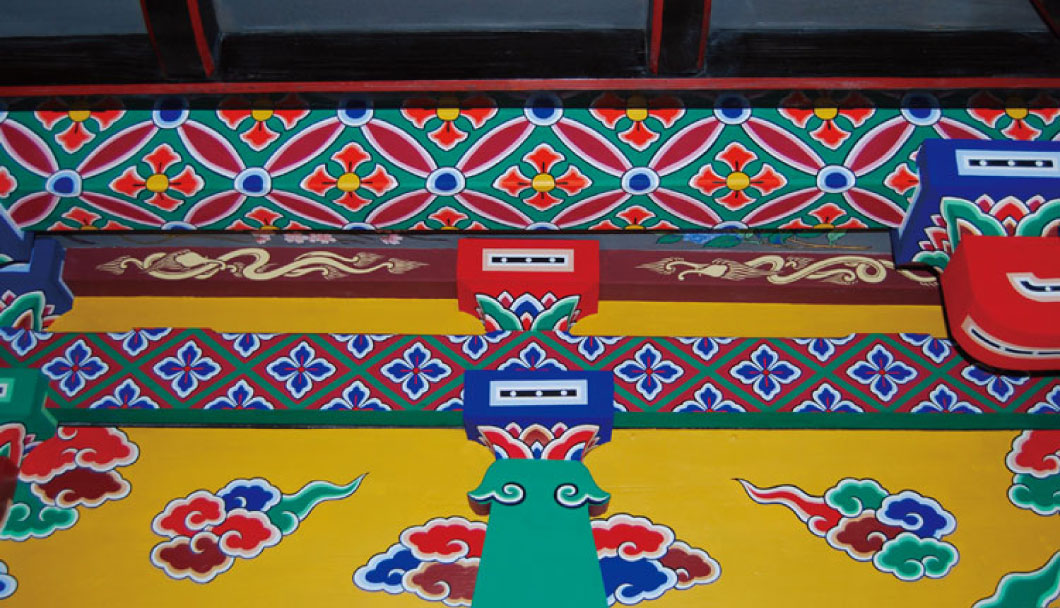
Nangenji Temple Shoro-do (bell tower) Shingon-shū Buzan-school (Kasumigaura City, Ibaraki Pref.) Roof replacement and renovation work on the Shoro-do (bell tower)
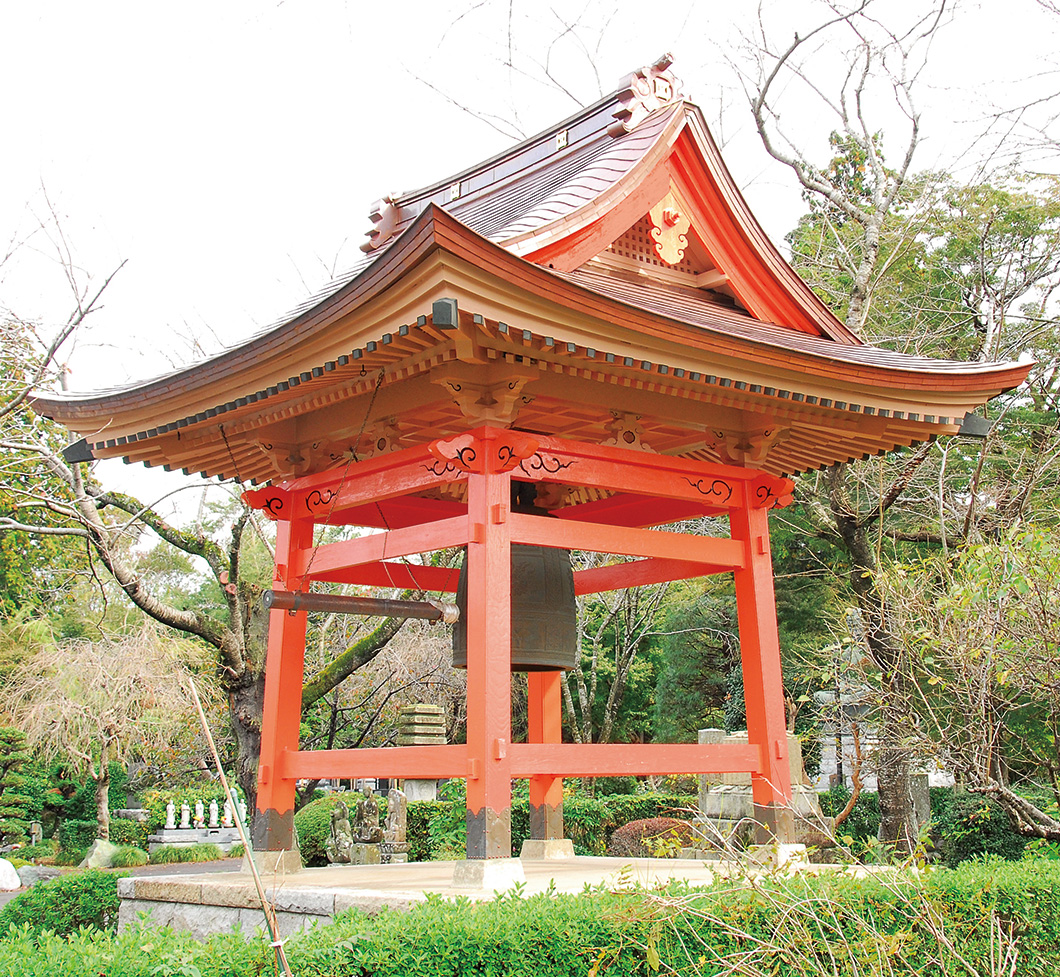
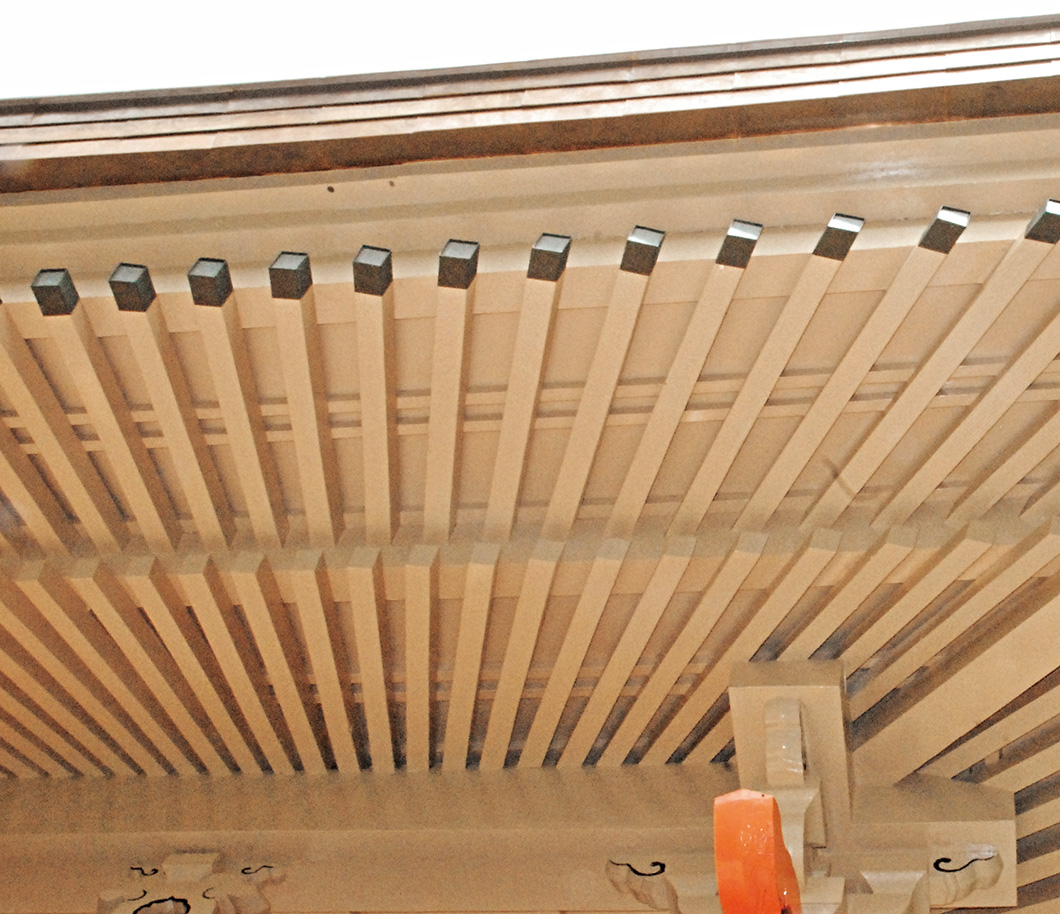

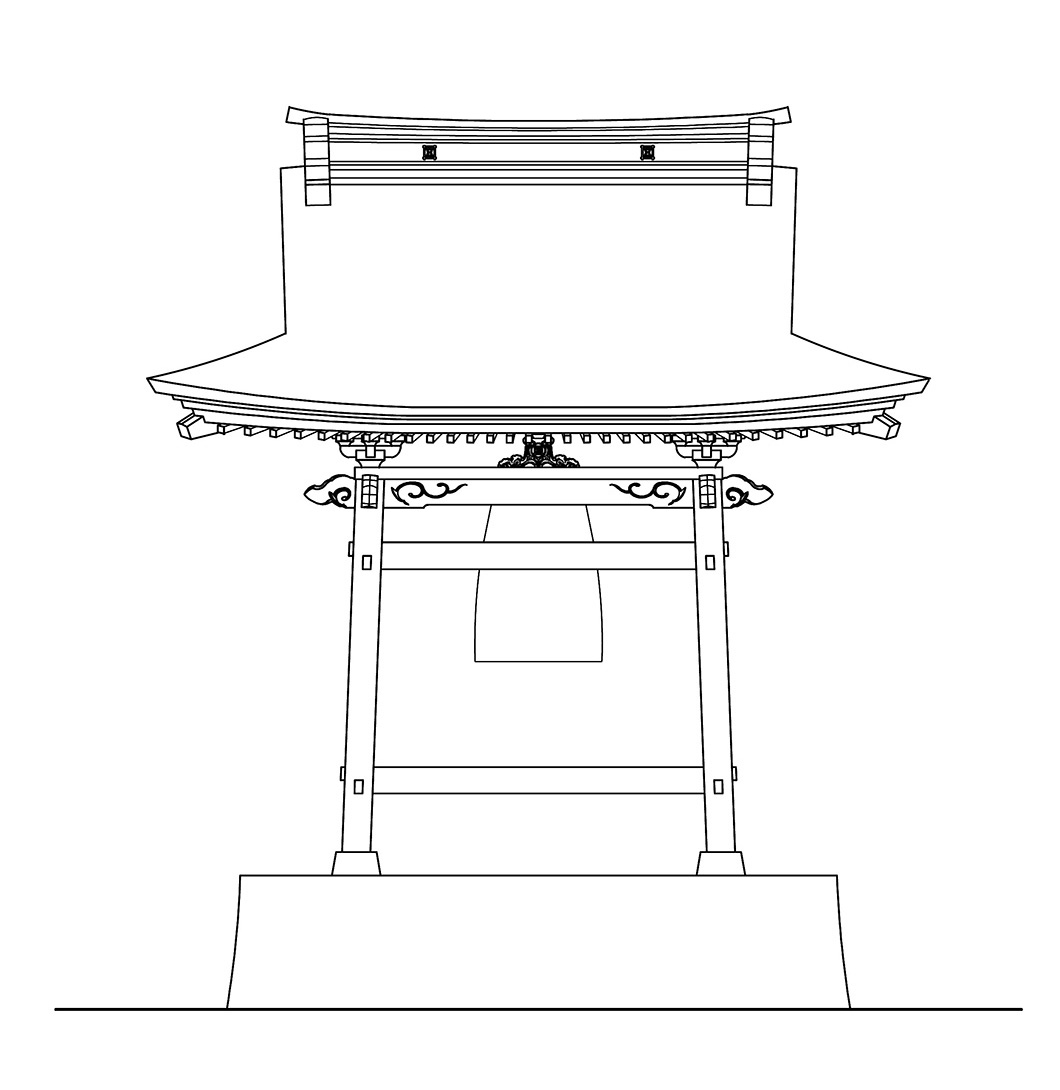
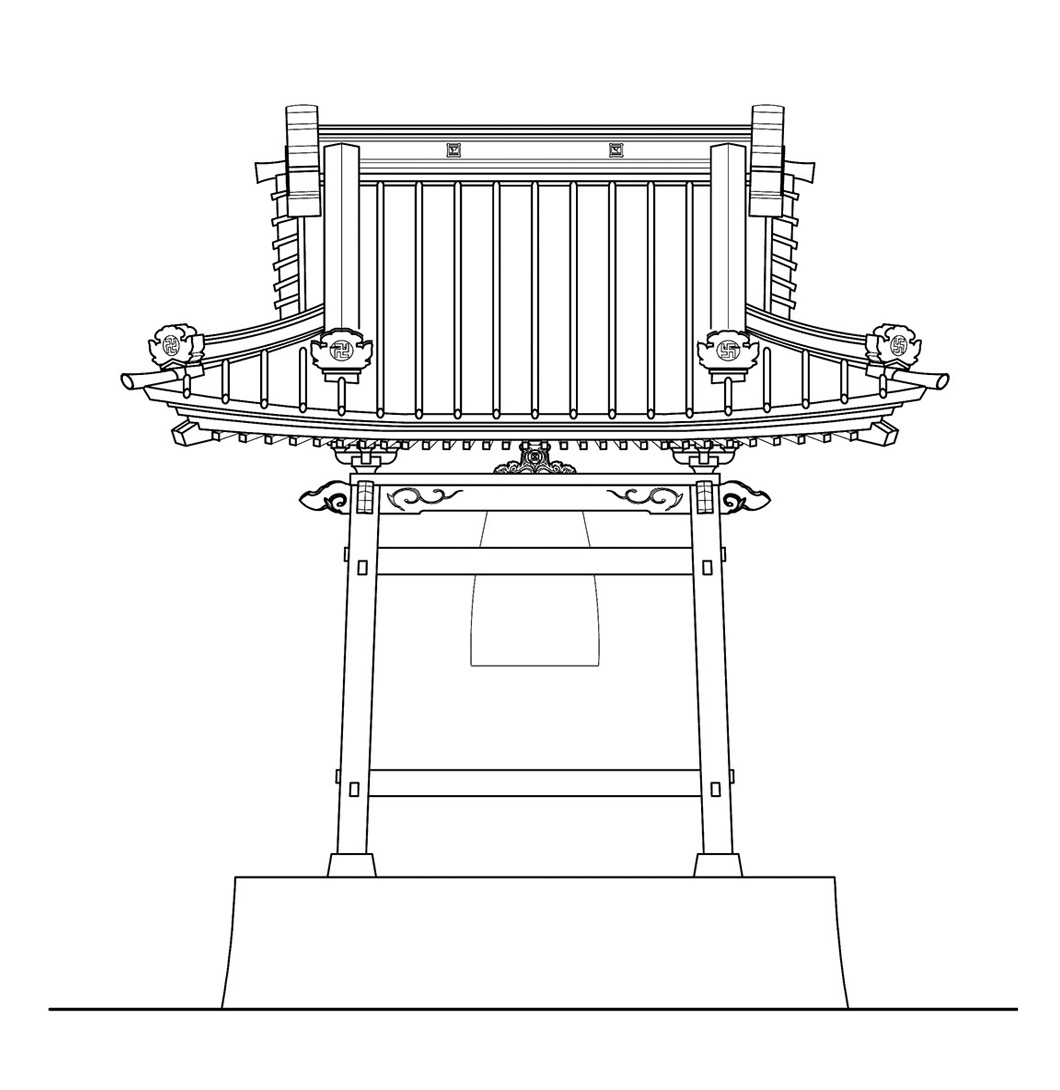
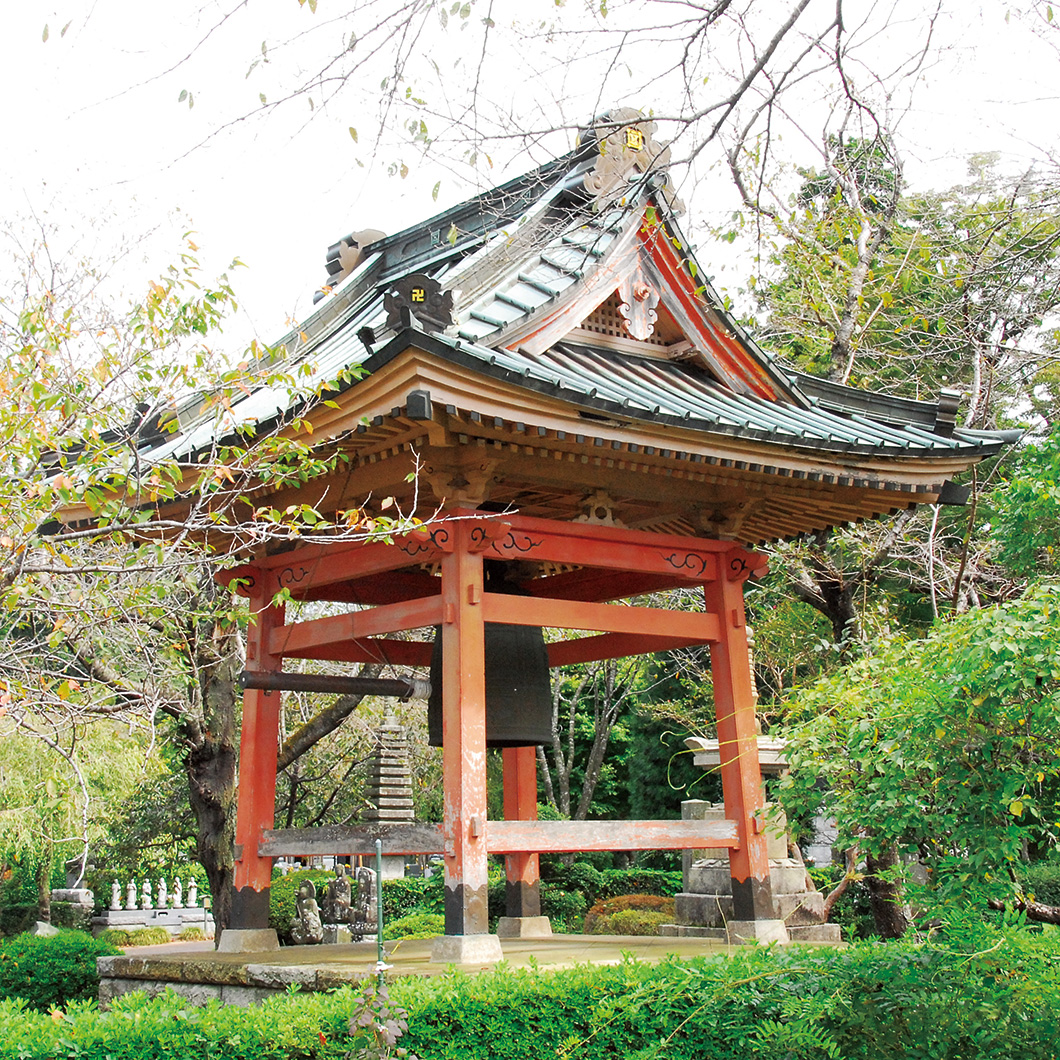
We also specialise in shrine architecture.
Mishima Shrine (Nishitama-gun, Tokyo) Shrine
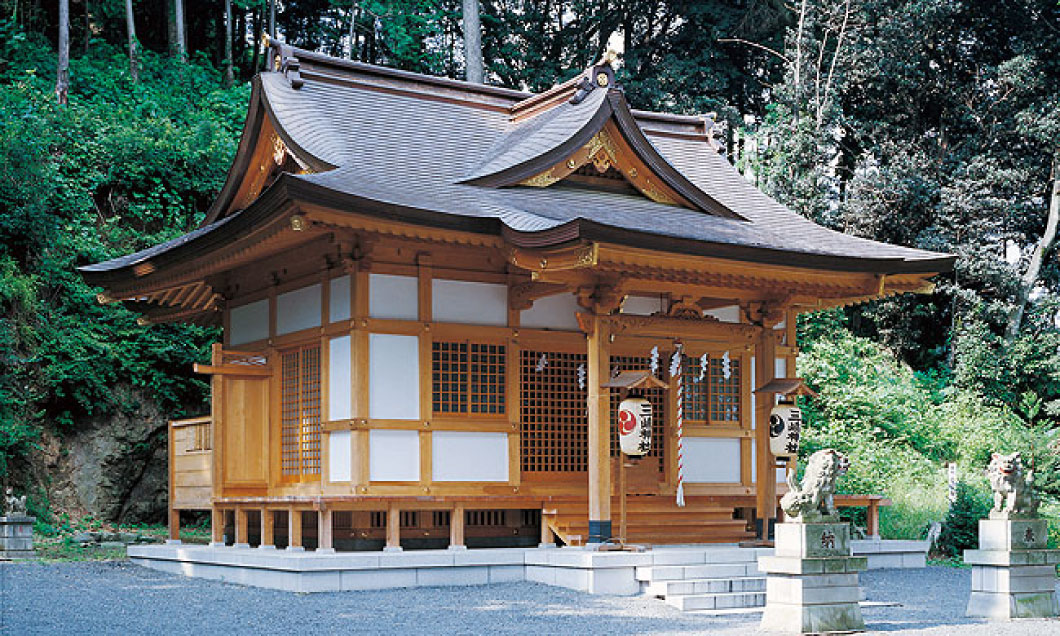
Suiundo has been involved in numerous shrine architecture projects. We have an abundant supply of cypress and zelkova wood for shrine architecture and can respond to a wide range of requests.
Grand Head Temple Soji-ji, Soto-shū
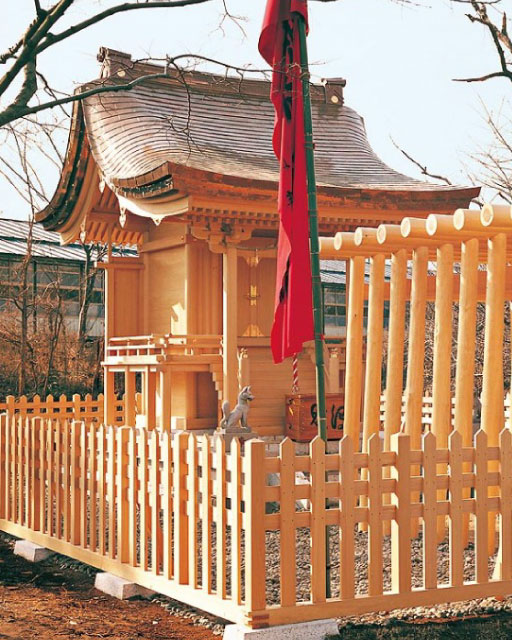
Ikkensha-style copper hirabuki , 5.1 Shaku wide
Daianji Temple, Soto-shū
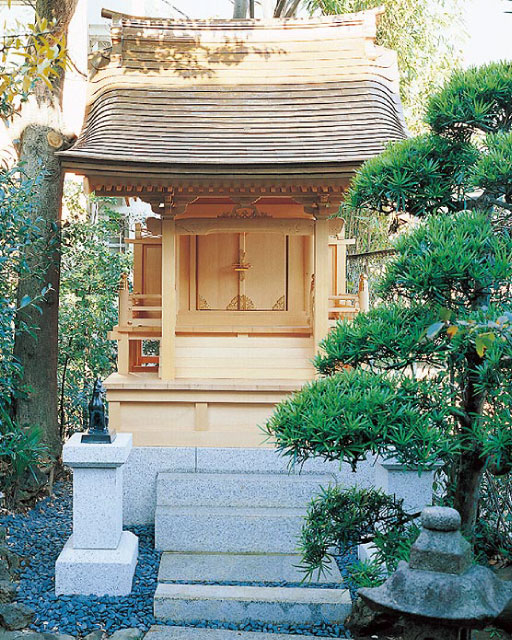
Nagare-zukuri shrine copper roof Frontage:3 shaku 90㎝
Head Temple Zuirinji Nichiren-shū
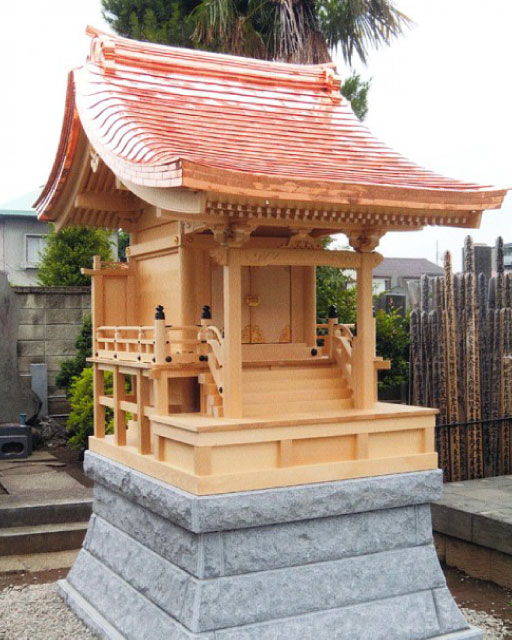
Nagare-zukuri shrine copper roof Frontage:2.5 shaku 75㎝
Grand Head Temple of Takao-san Yakuoin, Shingon-shu Chizan-ha(Hachioji City, Tokyo) Renovation of the Torii
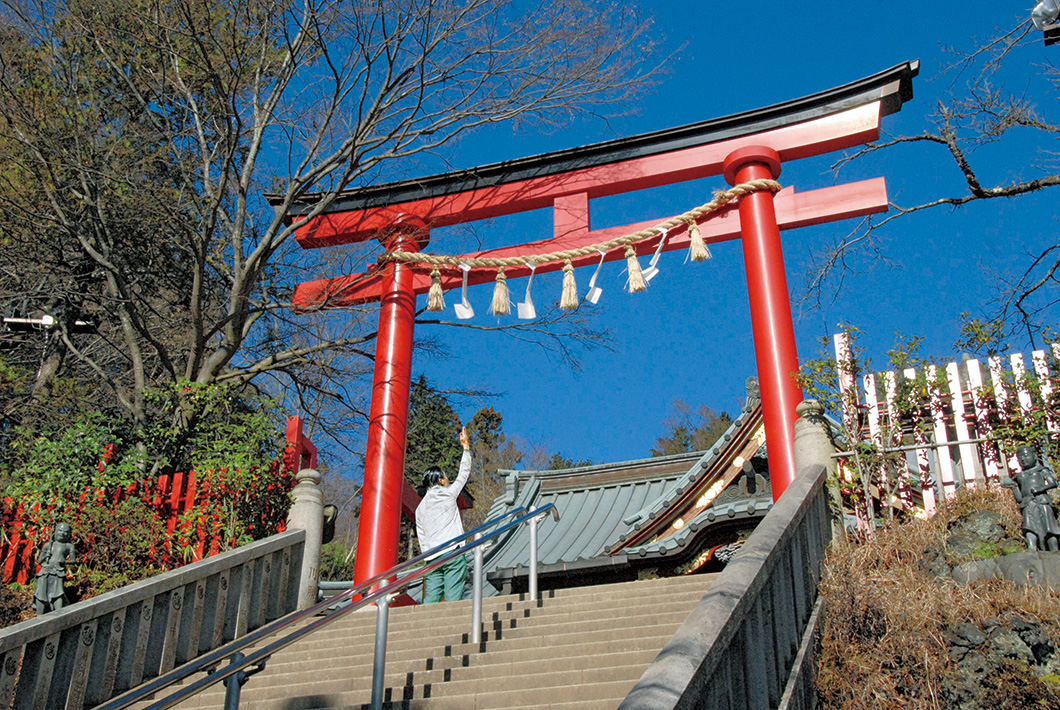
Achievement
- TOP
- Architecture


